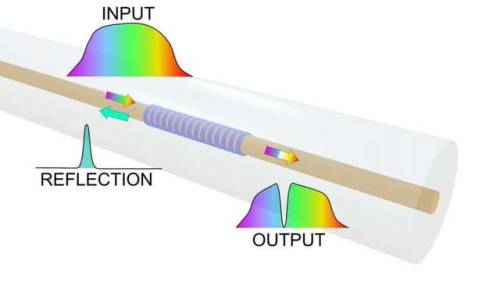#biocompatible
Implantable microrobots: Innovative manufacturing platform makes intricate biocompatible micromachines
A team of researchers led by Biomedical Engineering Professor Sam Sia at Columbia Engineering has developed a way to manufacture microscale-sized machines from biomaterials that can safely be implanted in the body. Working with hydrogels, which are biocompatible materials that engineers have been studying for decades, Sia has invented a new technique that stacks the soft material in layers to make devices that have three-dimensional, freely moving parts. The study, published online January 4, 2017, in Science Robotics, demonstrates a fast manufacturing method Sia calls “implantable microelectromechanical systems” (iMEMS).
By exploiting the unique mechanical properties of hydrogels, the researchers developed a “locking mechanism” for precise actuation and movement of freely moving parts, which can provide functions such as valves, manifolds, rotors, pumps, and drug delivery. They were able to tune the biomaterials within a wide range of mechanical and diffusive properties and to control them after implantation without a sustained power supply such as a toxic battery. They then tested the “payload” delivery in a bone cancer model and found that the triggering of release of doxorubicin from the device over 10 days showed high treatment efficacy and low toxicity, at 1/10 of the standard systemic chemotherapy dose.
Post link
Researchers create fiber optic sensors that dissolve in the body
For the first time, researchers have fabricated sensing elements known as fiber Bragg gratings inside optical fibers designed to dissolve completely inside the body. The bioresorbable fiber Bragg gratings could be used for in-body monitoring of bone fracture healing and for safer exploration of sensitive organs such as the brain.
A fiber Bragg grating is an optical element inscribed in an optical fiber, which is widely used as a sensing instrument. Although fiber Bragg gratings are commonly used for applications such as real-time monitoring of the structural health of bridges or tracking the integrity of airplane wings, until now they didn’t exhibit characteristics preferred for use in the body. With a design that allows them to break down similarly to dissolvable stitches, the new glass fibers should be safe for patients even if they accidently break, according to the researchers.
“Our work paves the way toward optical fiber sensors that can be safely inserted into the human body,” said Maria Konstantaki, a member of the research team from the Institute of Electronic Structure and Laser (IESL) of the Foundation of Research and Technology - Hellas (FORTH), Greece, that fabricated and characterized the new gratings. “Because they dissolve, these sensors don’t need to be removed after use and would enable new ways to perform efficient treatments and diagnoses in the body.”
Post link


